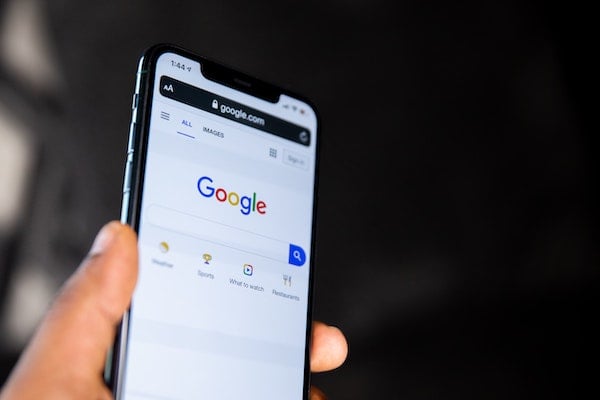Published on
Creating Content: The Value of SEO and a Great Digital Presence

Students require a lot more than a simple Google search when choosing a university. Today, students simply type what they’re looking for into a search engine and select the first results that appear. They want information fast, easily and concisely, and it’s important for institutions to take a careful look at how they’re operating their website. In this interview, Eric Turner discusses how to make your website more SEO friendly, why it’s so important, and how it impacts learner engagement.
This topic was originally set to be presented at OUTC20 in collaboration with Web Specialist, Mark Fernandez.
The EvoLLLution (Evo): How does great content impact your website’s SEO and the value it delivers to learners?
Eric Turner (ET): Search engine optimization is kind of a mystery. Google and some of the other search engines have proprietary formulas for figuring out what’s best and how your page should be ranked. What you can do instead of trying to figure out their algorithm—an ever-changing and evolving formula—is to write with a human approach from the get-go. If you keep your eye on creating a human-centered design, it will help you have great content. Once you have great content, you’re going to gain more users over time. The more users you have, then of course the higher your page ranks.
SEO looks at page titles and keywords, but rather than concern yourself with trying to game the system, write great content. You’re going to have good users that refer you to other people, and you’re going to have a much better website because of it.
Evo: How valuable is this human-first approach to website quality when it comes to maintaining a consistently high ranking regardless of the algorithm of the day?
ET: That’s exactly the goal. Accessibility is a big buzz word. Everyone wants their pages to be accessible now for two reasons: it’s the law, and it’s the right thing to do. Think about it: if your audience reaches the most amount of people no matter their socioeconomic background, you’ll improve your audience and offer them the most value. In return, you’ll have the highest rank for search-engine optimization.
Evo: How does the human-first approach to content development really drive the quality of the website in terms of achieving its goals?
ET: First, you have to look at who your audience is. The human-first design philosophy is going to try to keep things simple. We’ve got this phrase: “Cut, cut, cut some more. Cut until you cry.” Keep your texts short. Also, most people are tempted to use big buzz words in academia. The majority of our websites are seen by perspective students –high school students about to graduate or returning adults. Either way, you don’t want to use unfamiliar jargon that doesn’t speak to them. Only use big “academic” words when your audience calls for it and even then, less and simple is more.
One of the most popular authors of the 20th century was Ernest Hemingway, and content creators should ask themselves what Hemingway would do in their shoes. Hemingway wrote his books for a fourth-grade audience. If you can say it in a poetic way that’s poetic that uses a lot of flowery language, it’s not going to be appealing to the majority of today’s audience.
Also, people tend to scan rather text than read it. They’re looking for to get a sense that something fits their interests, and then they’ll go from there. If you’re using long paragraphs and dissertations, you’re going to lose your audience. There is a rule that says if you can’t grab your audience within the first ten seconds, they’ll move on from your website and go to the next. It’s likely even shorter than that now. You really want to have signposts, landing pages, pictures and headings that allow viewers to scan and immediately know what you’re about. If they like their first impression of your institution, they will click to see more details.
The other aspect to this is that people don’t always know the exact thing they want. They look for something close and try to narrow it down. It may not have been exactly what you as a website author were intending. Maybe what you wanted them to do was to go to the link below, but they might choose the link closer to the top of the page already disappeared onto another page before getting to the content you wanted them to reach. So, your content needs to be clear, concise and well-positioned.
Evo: What are some of the key elements to creating accessible and relatable content?
ET: There are a lot of best practices. Keep it short, use bullet points andwhite space and avoid jargon. Acronyms are abundant; we could have a whole dictionary of acronyms. If you’re new to the college, you might not know what a certain acronym means. You definitely want to spell out what those acronyms stand for when they are first referenced.
The human-first approach takes it a step further. It looks how the brain processes information. You want to give people quick and easy access to the information they’re looking for. Essentially, you want to start off with an appetizer (like a landing page) and then, if they like that, they might want to click on the main course.
The reason to keep it short is because it provides a cognitive load on your brain. You’ve probably heard the term, “A picture is worth a thousand words.” Well, a picture is also worth a thousand words of cognitive processing. You want to be careful. Include a lot of white space and meaningful pictures, but don’t add in unnecessary and irrelevant images just because they look nice. There should be a reason behind every picture!
To make it accessible, you want to add alternate text on those pictures. If you have videos, you want to have captions, and headings must be in the right hierarchical order. If you skip header levels, screen readers think an error has occurred. The better you optimize and organize your page, keeping it simple, to the point, and about answering common questions, the better your content will be. Your audience will appreciate being able to quickly and efficiently find what they’re looking for.
Evo: What are some resources and tools that you need to be able create a great website and deliver great content?
ET: There are two schools of thought. One school abides by the idea that all content should go through the marketing office and be created by someone trained in communicatons. That works great, but our institution is much too large for that. We have over 5,000 webpages that are actively being worked on. That’s just too much for any one group to handle.
We are organized on a distributed model, through which we train web editors to look at their own content critically. OmniUpdate OU Campus is our content-management system. When submitting a page for publishing, OU Campus will check whether there are any spelling errors, broken links or missed opportunities to improve accessibility. The person publishing the page can then make any last-minute fixes before the page is live on the Internet.
So, if you have the time and a web or marketing team that can look at every page before publishing it, that’s great, but we just don’t have those resources. We don’t want our functional users to wait on us, especially for small changes to appear live on the website. We’d rather teach other people how to update their own material–it’s the “train the trainer” kind of a mentality. If they make a mistake, OU Campus allows the page roll back to a previous version.
We’re using technology to first reduce the bottleneck, which creates more efficiency. Then, once things that can be automated are automated, we allow people to do the uniquely human things. Our experts can focus their time and energy on what they do best. It comes back to the human-first approach but also the authenticity needed for SEO to be successful.
Evo: When looking at the website today, what impact does it have on the student experience and the perception that people have of the institution?
ET: It’s like looking at a group of insects on a page, but among the insects is a beautifully colored butterfly. Your eye, amongst this multitude of insects, zeroes in on that butterfly. That’s exactly what we aim to do because Mt. SAC wants to be a center for excellence. Students have a choice: they can go to any institution. Why should they choose Mt. SAC?
If we put up a webpage, we want to have excellent content on it. We’ve had students tell us that they chose our institution because of our website. They didn’t need to go on a campus tour or dig for more information. A student told me that if an institution cares that much about their website, then they know they’re going to provide quality education. That’s a very important conclusion.
Imagine how frustrating it is to go to an institution’s website and see a typo, bad grammar, or click a link that doesn’t work. What does that say about the quality of your institution? We want to put our best foot forward.
Evo: Is there anything you’d like to add about the human-first design behind website content and the impact that it has on your capacity to engage learners?
ET: That human-first approach is really all about the best way to engage the largest audience possible, no matter who its members are. If you keep things short, simple and understandable, you’re going to appeal o more people. They want to be able to skim the page and find what they’re looking for.
It’s like looking at Apple’s website. They have beautiful imagery of their latest phone model because they know it’s probably what you’re looking for. They don’t clutter the page, and there’s not a lot of marketing at play. It’s a “this is our product” approach with a couple of links if you’re interested in knowing more details. It’s hard to do better than that.
The Google landing page is another great example. It’s one search box with the Google logo. For the most part, it’s very plain and simple. I can do what I came to do. People come to your site with a purpose. They come to buy and consume content, and when they’re done, they’re off doing whatever else they want to do.
This interview was edited for length and clarity.
Disclaimer: Embedded links in articles don’t represent author endorsement, but aim to provide readers with additional context and service.
Author Perspective: Administrator



